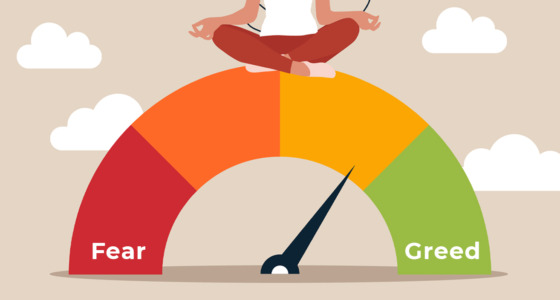

Finance and business are intertwined together to build any business. The leverage thus becomes a powerful tool that can propel new heights for business, but only if handled properly. With this article, you will understand the three main types of leverage, the Degree of Operating Leverage (DOL), pros and cons, and unravel the implications and importance of maintaining a balance to avoid over-leverage.
Understanding Leverage and Its Types
Leverage, in its essence, revolves around the idea of maximizing returns through the building of inventory, equipment, and assets. This essential requirement has given rise to the three primary types of leverage: Operating Leverage, Financial Leverage, and Combined Leverage.
Leverage means “उत्तोलन,” in Hindi, which basically means taking loans to buy things. The primary concept enables individuals and businesses to control larger assets or undertake greater projects than feasible with their own resources alone. The three major types of leverage are discussed ahead.
Operating Leverage
Operating leverage relates to a company’s fixed costs and variable costs. Fixed costs, as the name suggests, are costs a business incurs regardless of the number of products or services it produces. Whereas the variable costs fluctuate based on the production volume. When a company has a high proportion of fixed costs compared to variable costs, it is said to have high operating leverage. This means that a small change in sales can lead to a larger change in profits due to the fixed costs being spread across a wider revenue base. However, a decline in sales could result in larger losses, given that fixed costs continue regardless of the revenue generated. The operating leverage can be calculated by dividing the fixed costs by the variable costs. The higher the ratio, the higher the operating leverage.
Financial Leverage
Financial leverage is perhaps the most commonly recognized form of leverage. In simple words, it is the debt a business holds. The aim of borrowing funds could be to invest in assets to generate returns that exceed the cost of borrowing. It is like buying real estate through a mortgage with the hope that the property’s value will appreciate enough to cover the interest costs and yield a profit. However, financial leverage magnifies both gains and losses. Individuals or businesses can control larger assets with a smaller initial investment. It can be calculated by dividing the average total assets by the average total equity.
Combined Leverage
Combined leverage, as the name suggests, is a combination of operating leverage and financial leverage. It considers the impact of fixed costs, variable costs, and the use of borrowed funds on a business’s overall profitability. This type of leverage allows for a comprehensive assessment of how changes in sales and costs, along with financial decisions, can influence the goals. Combined leverage takes into account both fixed costs and the interest costs associated with borrowed funds. To calculate this, you simply need to add the Operating and Financial leverage.
What Is the Degree of Operating Leverage (DOL)?
The Degree of Operating Leverage (DOL) is a metric that quantifies the relationship between a company’s fixed costs and its profits. It checks the sensitivity of a company’s earnings before interest and tax (EBIT) to the changes in its sales. It reveals the extent to which changes in sales affect a company’s operating profits. In other words, it assesses the risk and reward associated with a company’s fixed and variable cost structure.
Note! A high DOL indicates that a company has a significant portion of fixed costs in its cost structure, which makes its profits more vulnerable to fluctuations in sales.
How to Calculate the Degree of Operating Leverage
The formula to calculate DOL is relatively simple:
DOL= (% Change in Operating Income) / (% Change in Sales)
The operating income here means the percentage change in EBIT and is calculated by dividing the change in operating income by the initial operating income. The percentage change in sales is the change in sales divided by the initial sales.
For instance, if a company’s operating income increases by 15% due to a 10% increase in sales, the DOL would be calculated as follows:
DOL = (15% / 10%) = 1.5
This means that for every 1% change in sales, the operating income will change by 1.5%, indicating a high degree of operating leverage.

The Pros and Cons of a High Degree of Operating Leverage
A high degree of operating leverage can have advantages and drawbacks for a company. Thus, a company must carefully monitor the substantial rewards and heightened risks associated with the high Degree of Operating Leverage. Some of the pros and cons are:
Pros
- Profit Amplification: A high degree of operating leverage means that a small increase in sales can lead to a larger profit increase. A high DOL can lead to significant profit magnification in a favorable market due to the spread of fixed costs.
- Economies of Scale: Fixed costs are often related to production capacity. A high DOL can influence a company’s focus to increase its production level to take advantage of economies of scale and potentially reduce costs.
Cons
- Risk of Loss Amplification: It is not just a one-sided track that we consider just how a small increase in sales can magnify profits; the reverse is also true, and a small amount of decrease in sales can lead to a more significant decline in profits, potentially causing losses or financial distress.
- Less Flexibility: A higher level of fixed costs can limit a company’s ability to quickly adjust to changing market conditions. This lack of flexibility can hinder strategic responses to shifts in demand.
- Short-Term Failures: Fixed costs cannot be easily adjusted in the short term, making it difficult for a business to adapt swiftly to changes in the market environment.
Avoiding Over-Leverage: Maintaining the Right Balance
Although leverage offers numerous opportunities for growth and returns for a company, there is a crucial caveat in this: the risk of over-leverage. Over-leverage occurs when a company borrows too much, exceeding its capacity to service the debt. This can lead to financial instability and, in severe cases, even bankruptcy.
To avoid over-leverage, companies must maintain a balance between their fixed and variable costs, debt obligations, and revenue-generating capacity. Careful financial planning and risk assessment are essential. Additionally, a solid understanding of the Degree of Operating Leverage (DOL) can help managers gauge the potential impact of changes in sales on their profits.
Maintaining a prudent approach to keep a check on over-leverage involves several key strategies, such as:
- Diversification: Spread investments across various assets and projects to mitigate the impact of poor-performing ventures and reduce overall risk.
- Risk Assessment: Carefully evaluate leverage’s potential risks and rewards before making decisions.
- Financial Discipline: Ensure that debt remains manageable and that repayment obligations can be met even during challenging times.
- Scenario Analysis: Conduct thorough scenario analyses to understand how changes in variables like sales, costs, and interest rates can affect the ultimate goal.
Conclusion
In its varied forms, leverage can potentially elevate businesses and investments to greater heights. From operating leverage, which revolves around cost structures, to financial leverage, which magnifies gains and losses, to the combined leverage that accounts for these factors, leverage offers diverse avenues for growth and prosperity. It is thus very important that to make informed decisions, everyone understands the intricacies of the Degree of Operating Leverage (DOL).
However, there are risks associated with leverage, especially over-leverage, that can spell disaster for even the most promising ventures. The key is to maintain the right balance between leveraging opportunities and maintaining financial stability. Leverage is a great funding source and can increase the rate of return on equity, but at the same time, it magnifies the associated risks. Thus, wisdom lies in harnessing the power of leverage while exercising caution and responsibility.









